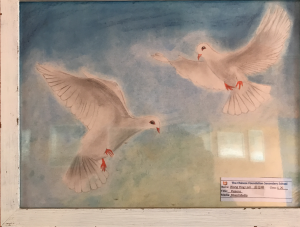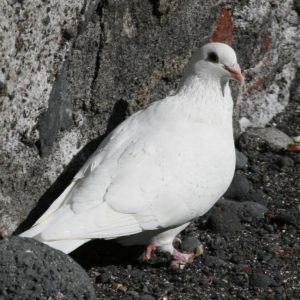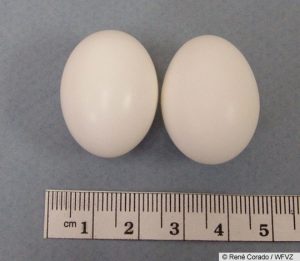| Common Name | (in English) White Ring-neck Dove |
| (in Chinese) 白鴿 | |
| Scientific Name | (in Latin) Streptopelia capicola |
| Peculiar characteristics / external features: | As with related species, they have white fringes and conspicuous white tips to the otherwise slate grey tail feathers. The tail pattern is particularly noticeable during the display flight. |
| Distributions: | Ring-neck Dove is a widespread and often abundant dove species in East and southern Africa. |
| Habits: | |
| Dietary | They feed mainly on seeds (of grasses, cereal grains, lupins, milkweeds, alien acacias and pines), but also on broken fruit and berries (of oaks, gums, currants and Lantana), and insects on occasion (earthworms, termites, weevils and other). Other recorded food items include small sedge bulbs, fleshy succulent leaves, aloe nectar and sugary aphid secretions. |
| Reproductive (Solitary/Social/Territorial, Courtship Behavior, Taking care of youngs, etc) | These doves are usually found alone or in pairs, although they do form larger flocks around roosts or sources of food and water, sometimes comprising hundreds of birds. Their song is a loud and harsh “kuk-COORRRR-uk, …” (sometimes interpreted as ‘how’s father?’ or ‘work harder’) which they may repeat ten to forty times. Less often a repeated “wuh-ka-RROOO, …” may be given. A raspy, snarling “kooorr”, or“knarrrrrr”, call is often given when it alights on a perch, arrives at an incubating mate or chases another dove away. |
| Whatever appropriate | They are monogamous, territorial nesters. Males display by flapping up a steep gradient before spiraling down with wings and tail spread out. From a perch or on the ground the male will engage in a bowing display, synchronized with a rolling crooning, “uk-carrroooo, …”, while the throat is inflated. A pair will give a double coo with a long second syllable when selecting a nest site. |
| Interesting Fact: | A release dove, also called white pigoen, is a breed of rock dove (domestic pigeon) used for ceremonial release. Release doves are often used to commemorate important milestones of life and offerings of hope at weddings and birthdays and as representing the soul’s final journey at funerals. They are also released at grand openings, sporting events, and many outdoor gatherings. |
References:
https://www.hbw.com/species/ring-necked-dove-streptopelia-capicola
http://www.iucnredlist.org/details/22690488/0
http://datazone.birdlife.org/species/factsheet/Ring-necked-Dove





